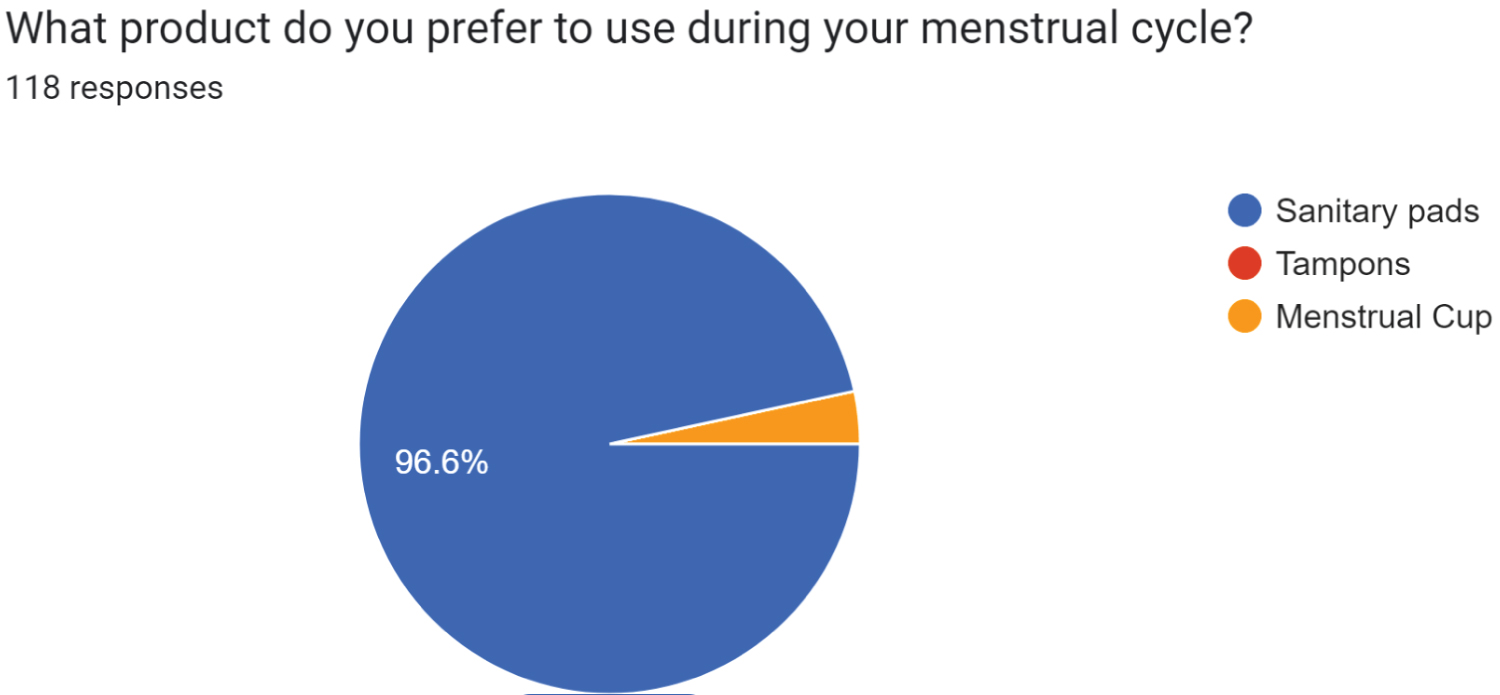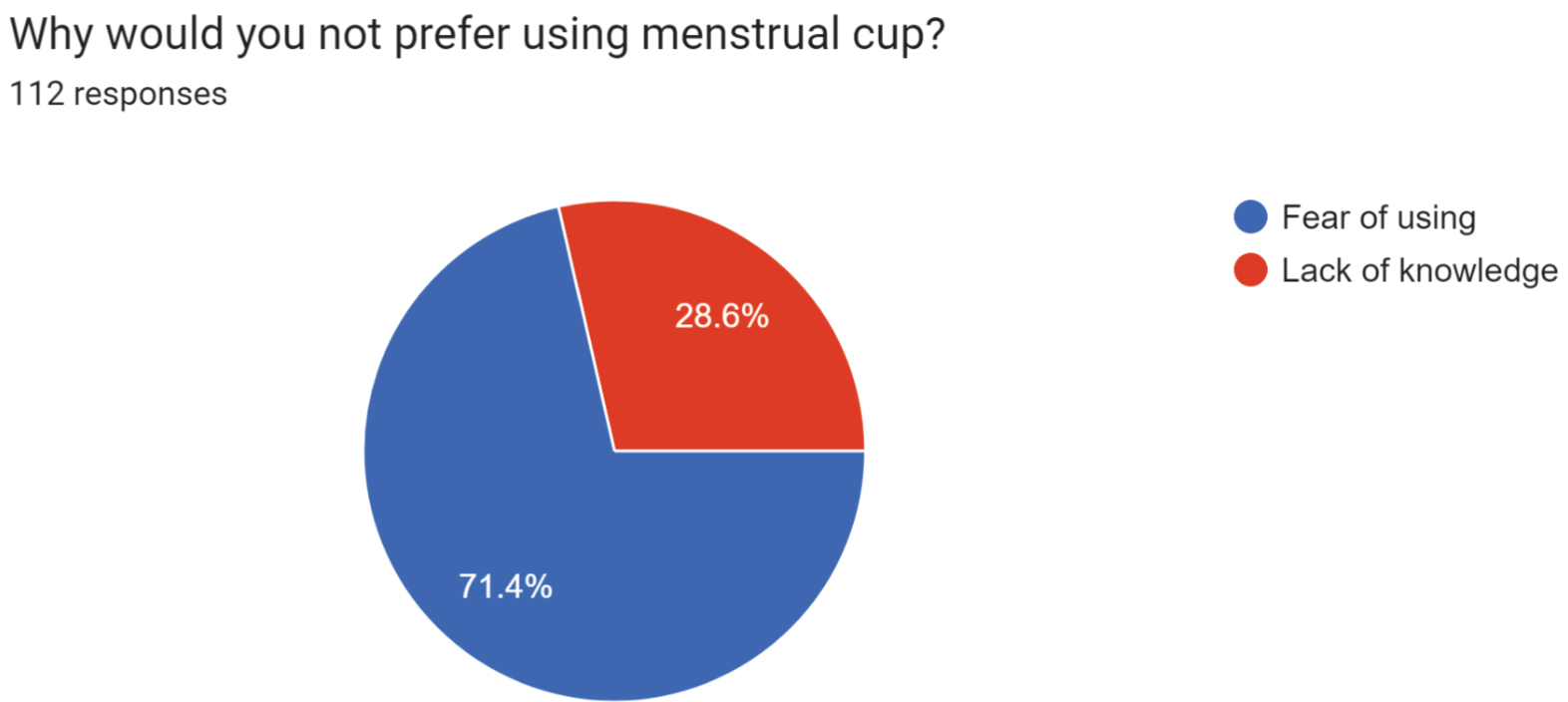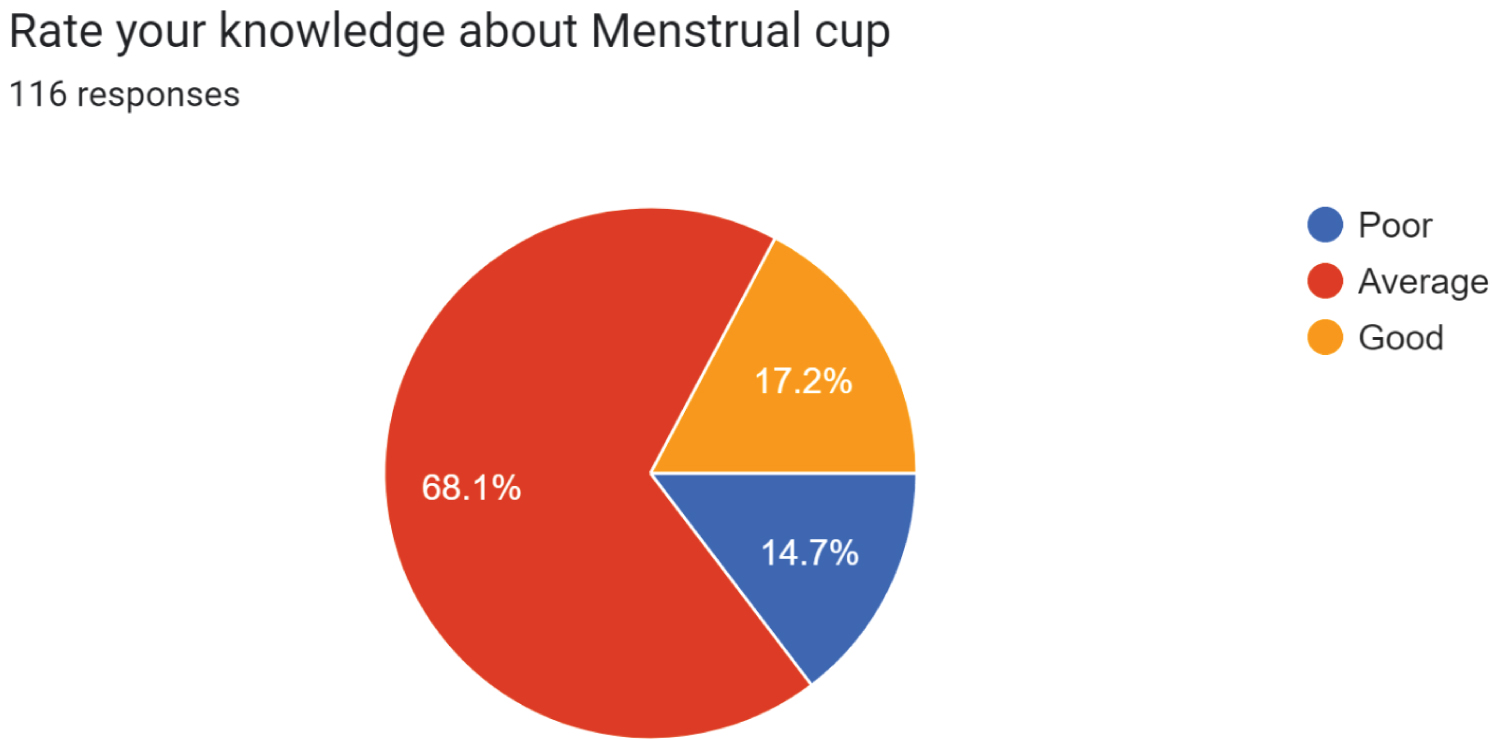Assessment of Knowledge and Practices Regarding Menstrual Health Hygiene and Usage of Menstrual Cup among Women
Abstract
Menstrual hygiene is crucial for women’s reproductive health, particularly among young adults. This study aims to assess knowledge and practices related to menstrual health hygiene and products, specifically focusing on the awareness of menstrual cup usage among adolescent girls. Based on questionnaires through online form and then data were collected and Statistical analysis were done. The study investigates the prevalence and perceptions surrounding menstrual cup usage and provides insights into menstrual health practices among women.
Introduction
The preferred sanitary products women use during menstruation are reusable cloth pads, commercial sanitary pads, tampons, pads made from wool, reusable tampons, and menstrual cups [1]. They are expensive, non-reusable, and not environmentally friendly. Pads and tampons: Most are made of synthetic material like rayon or SAPs. All of this means that there are some chemicals of concern that commonly show up in pads and tampons: Dioxins and furans have been linked to cancer, endocrine disruption, and reproductive toxicity and infertility [2]. The vaginal mucous membrane is extremely permeable and can absorb chemicals like dioxin directly into the bloodstream.
Menstrual cup is a new technology alternative to sanitary pads and tampons. They are like cups made of medical-grade silicon rubber, making the cup easy to fold and insert in the vagina to collect menstrual blood [3,4]. Cups can hold more blood than other methods, leading many women to use them as an eco-friendly alternative to tampons. They can be worn for up to 6-12 hours, depending upon the amount of menstrual flow, so they require less frequent removal and to be emptied [5].
They are reusable and environmentally friendly. It is a sustainable, practical, and cost-effective alternative that can be worn in the presence of an intra-uterine Device (IUD). Hence, the menstrual cup is a safer and environment-friendly alternative to deal with menstruation among women. Therefore, the researcher aimed to assess 1) The knowledge regarding the use of menstrual cups among adult and 2) To develop a self-instructional module on self-insertion and removal of menstrual cups.
Methodology
Cross-sectional survey was conducted through online forum on march 2024 among 118 women reproductive age group, data was entered in M.S EXCEL AND ANALYSED using spss software recent version. The significance values are plotted using chi-square test.
Questionnaire
Age?
How did you get to know about menstrual cups?
Product most preferred during Menstruation.
Are you aware of menstrual cups and their use?
Why would you not prefer Menstrual Cups?
What do you probably think Menstrual Cups are made of?
For Existing Users
7. What challenges have you encountered while using?
8. What motivated you to try using Menstrual Cups?
9. Rate your satisfaction no fusing?
10. Would you recommend it to others?
11. Do you find it cost effective?
Result and Discussion
A total above 118 participants were included, majority were aged between 18-24 years, unmarried and students. The mean score knowledge prefer to use santitary pads only [6-9]. The knowledge and awareness about menstrual cup 83.8% and fear of usage 71.4% and usage of material knowledge of participant silicon 50% and tried ratio is about 54%. The challenges faced to insert difficulty 50% and they willing to recommended ratio is about 72.9% and cost effective too [10,11] (Figure 1, Figure 2, Figure 3, Figure 4, Figure 5, Figure 6, Figure 7, Figure 8, Figure 9, Figure 10 and Figure 11).
Conclusion
Despite the limitations of this study due to the small sample size, the knowledge, attitude and acceptance for the use of menstrual cups among the educated groups was well appreciated. When a comparison is done between willingness to use menstrual cup and its actual use, a huge gap is seen. The use of menstrual cup should be promoted among Indians especially in rural parts where the basic resources for menstrual hygiene are not available as they are cost effective, reusable and also require less water to clean and will help to improve their hygiene as well. To increase the usage of menstrual cups, youth should be targeted, who are more open to the idea of environment friendly products. Further in longer run these programs can have impact on larger population of women who are unaware of it. Health education programs must be taken up at local and national levels to promote the use of menstrual cups.
References
- North BB, Oldham MJ (2011) Preclinical, clinical, and over-thecounter post-marketing experience with a new vaginal cup: Menstrual collection. J Women's Health 20: 303-311.
- Howard C, Rose CL, Trouton K, et al. (2011) FLOW (finding lasting options for women): Multicentre randomized controlled trial comparing tampons with menstrual cups. Can Fam Physician 57: e208-e215.
- Averbach S, Sahin-Hodoglugil N, Musara P, et al. (2009) Duet for menstrual protection: A feasibility study in Zimbabwe. Contracept 769: 463-468.
- Mason L, Laserson K, Oruko K, et al. (2015) Adolescent schoolgirls’ experiences of menstrual cups and pads in rural western Kenya: A qualitative study. Waterlines 34: 15-30.
- (2016) Menstrual cup master list.
- Stewart K, Greer R (2010) Women's experience of using the Moon cup. J Obstet Gynaecol 30: 285-287.
- Phillips-Howard PA, Caruso B, Torondel B, ZulaikaG, Sahin M, Sommer M (2016) Menstrual hygiene management among adolescent schoolgirls in low and middle-income countries: Research priorities. Global Health Act 9: 33032.
- Sumpter C, Torondel B (2013) A systematic review of the health and social effects of menstrual hygiene management. PLoS One 8: e62004.
- Juma J, Nyothach E, Laserson KF, et al. (2017) Examining the safety of menstrual cups among rural primary school girls in western Kenya: Observational studies nested in a randomized controlled feasibility study. BMJ Open 7: e015429.
- Van Eijk AM, Laserson KF, Nyothach E, et al. (2018) Use of menstrual cupsamong school girls: Longitudinal observations nested in a randomised controlled feasibility study in rural western Kenya. Reprod Health 15: 139.
- Kakani CR, Bhatt JK (2017) Study of adaptability and efficacy of menstrual cup in managing menstrual health and hygiene. Int J Reprod Contracept Obstet Gynecol 6: 3045-3053.
Corresponding Author
R. Yasodai, Department of Anatomy, RVS Dental College and Hospital, Coimbatore, India.
Copyright
© 2024 Seeli et al. This is an open-access article distributed under the terms of the Creative Commons Attribution License, which permits unrestricted use, distribution, and reproduction in any medium, provided the original author and source are credited.















